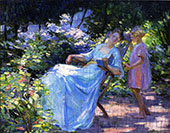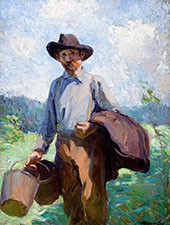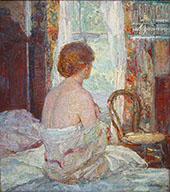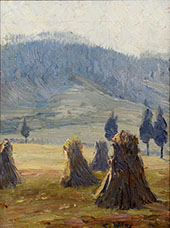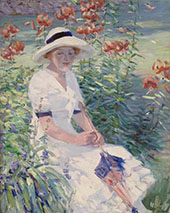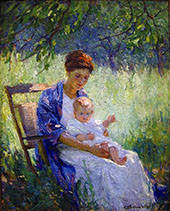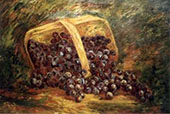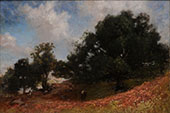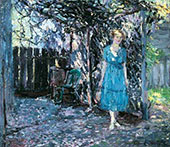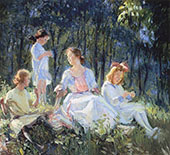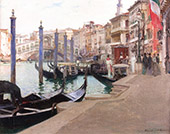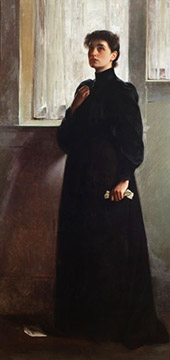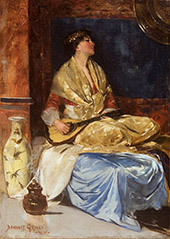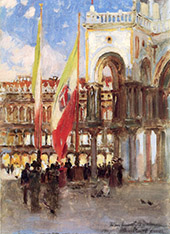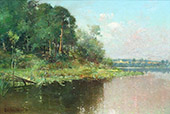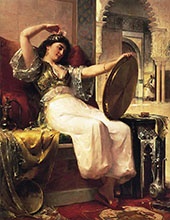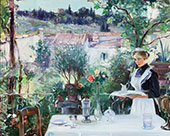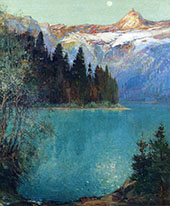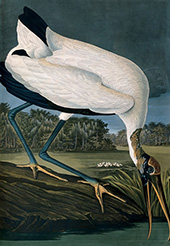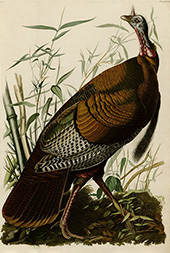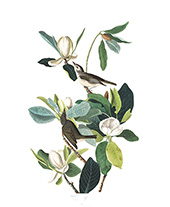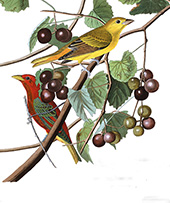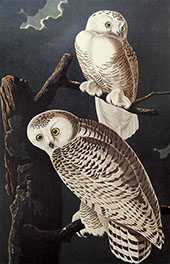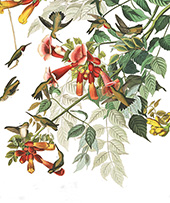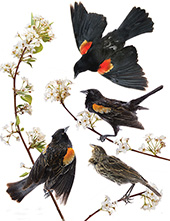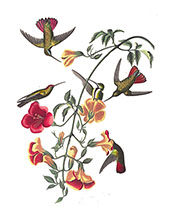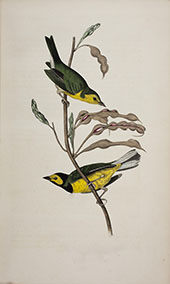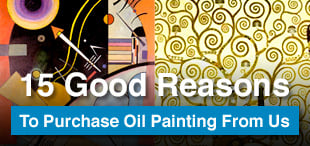American Art Oil Painting Reproductions
Find American Art oil painting replicas by American Art artists
American Art: A Brief Introduction
American art has a rich history stretching from the earliest Indigenous cultures to recent contemporary art paintings and avant-garde approaches. Centuries before European settlement, Native American peoples created art in America. After the arrival of Europeans in the 16th century, American landscape painters and portraitists often emulated more classical styles. From the mid 19th century onwards, several distinct American movements appeared. The Hudson River School, American Impressionism, Abstract Expressionism art, and later Color Field Painting are just a few exciting developments in the art world at the time.
This brief introduction examines what makes American artwork unique and what some of the most famous American paintings are.
What is American Art history?
American art history refers to many artists, artworks, and styles. It applies to Native American paintings and art from the American Revolution and Civil War. It also includes African American art of the Harlem Renaissance and depictions of the American West.
American art history includes modern movements such as American Impressionism, Abstract Expressionism, Action Painting, and the Ashcan School.
Consequently, American Art History is more than one entity but a progression of artistic developments and astounding creativity. It produced famous painters, from Albert Bierstadt and James McNeill Whistler to Mary Cassatt, Edward Hopper, Horace Pippin, Mark Rothko, Jacob Lawrence, and Jackson Pollock. For many art historians, American Art usually ends around World War II. After this point, movements such as Abstract Expressionism gained a worldwide following. With the increasing globalization of the art world, movements strictly based on nationality made less sense. Nonetheless, American artists continued producing some of the most innovative contemporary art of the late 20th and early 21st centuries.
What defines American Art?
Given the extensive range of American artwork, there is no single defining characteristic. Therefore, instead of trying to explain American art as a whole, it is worthwhile investigating the most famous American art movements and their defining characteristics:
- The Hudson River School. A Romantic art movement, producing some of the finest American landscape paintings.
- Luminism. A soft and sophisticated style adopted by American landscape painters of the 1850s to 1870s.
- Tonalism. Appearing during the 1880s, Tonalism uses overall tones of colored atmosphere and mists.
- American Impressionism – is a unique transnational movement inspired by French Impressionism.
- The Boston School. A regional group that combined conservative figure painting with Impressionist styles.
- The Ashcan School. An early twentieth-century movement using realist techniques depicting the lives of the American working class.
- The Harlem Renaissance. A flourishing, brilliant African American painting art movement centered around Harlem, New York.
- Abstract Expressionism. American painters promoted new forms of vibrant abstract art in the 1940s and 50s.
- Action Painting. Prevalent from the 1940s to the 1960s, this style emphasized the physical act of painting.
- Color Field Painting. Abstract painters in the 1950s and 60s used flat “fields” of single colors.
What is modern American art?
The historical meaning of Modern Art includes oil paintings produced between the 1860s and 1970s. It is usually associated with art movements such as Impressionism and Post-Impressionism that launched a new age of creative thinking. Primarily working in France, famous artists such as Claude Monet and Vincent Van Gogh discarded tradition and celebrated experimentation. In terms of America, however, American Modernism was a specific trend appearing at the turn of the 20th century. With a period of intense creativity between the two World Wars, it took inspiration from earlier European developments. American artists working during this period looked to their newly industrialized world. As a result, they rejected earlier approaches to Classical Art and created avant-garde painting styles. Ashcan School artists such as Robert Henri and George Luks, the later Action Paintings of Jackson Pollock, and Color Field painters such as Mark Rothko and Clyfford Still continued this revolutionary approach, albeit leaning more towards Abstract Art.
Who is America's most famous artist?
There are many famous American artists. This esteemed group includes James Abbott McNeill Whistler, Mary Cassatt, John Singer Sargent, Childe Hassam, Edward Hopper, Jackson Pollock, and Mark Rothko. Nonetheless, America’s most famous artist today is Andy Warhol. As the father of Pop Art, he transformed the world of fine art. After Warhol’s meteoric rise to fame, the days of lofty academicism were gone. Instead, Warhol created art interacting with celebrities, advertising, fashion, and consumer goods. As a result, his iconic prints, Campbell's Soup and Marilyn Monroe celebrate and critique capitalism in equal measure. As a fundamental shift away from Abstract Expressionism, his art transformed American art and perceptions of the United States.
Famous American paintings?
Art Historians still hotly contest the most famous American painting. Selecting one famous oil painting with many famous American artists and artworks is nearly impossible. Nonetheless, some famous paintings have worked their way into the national consciousness to such an extent that they could all classify as the nation’s most significant artworks. Here are three examples:
- James Abbot McNeill Whistler, The Artist’s Mother 1871
Titled “Arrangement in Gray and Black No. 1”, though better known as Whistler’s Mother or The Artist’s Mother, this painting is a true cultural icon. Described by some as the Victorian 'Mona Lisa,' it shows Whistler’s experimentation with Tonalism painting. With liquid paint scraped thinly over the canvas, Whistler’s somber grays, blacks, and whites form a compositional element. Some critics even guess the dark color palette and stiff posture hint at more profound love, death, and parental aging themes. - Grant Wood, American Gothic 1930
In this iconic work of social realism, Grant Wood painted a specific house in Eldon, Iowa. The style of architecture, Carpenter Gothic, gives the painting its enigmatic title. Wood depicted the kind of people he “fancied should live in that house.” He felt this should be a farmer and his daughter. The figures were Wood’s dentist, Dr. Byron McKeeby, and his sister Nan Wood Graham. - Edward Hopper, Nighthawks 1942
One of the most recognizable paintings in American art is Nighthawks by Edward Hopper. It is a genuinely great and famous oil painting. Like most Edward Hopper paintings, Nighthawks alludes to the isolation and loneliness of a modern city. Hopper's painting has a universal quality that explains its enduring appeal. Hopper claimed it was a specific restaurant on New York’s Greenwich Avenue. Hopper's Nighthawks is one of our most popular paintings.
What are some examples of American art?
In addition to these famous American paintings, there are many other examples of stunning American art throughout the centuries. Childe Hassam paintings are celebrated by his American flag wall art. Just before America entered World War I, Hassam saw a 'preparedness parade.' These parades championed the country’s readiness to defend democracy and freedom against oppression. Childe Hassam flag paintings capture this spirit of optimism. His patriotic paintings depict the famed stars and stripes of the American flag fluttering above New York City streets. The most famous painting is The Avenue in the Rain 1917. Hassam's paintings adopt a strong Impressionist painting style of fleeting brushstrokes with colorful yet muted tones. The Avenue in the Rain has been displayed in the Presidential Oval Office as a quintessential emblem of American national pride.
In addition to American Impressionists such as Childe Hassam and Mary Cassatt, Native American, and Cowboy Paintings are another noteworthy genre. E Irving Couse produced some of the best-known depictions of Native American people, particularly of the Taos Tribe. Walter Ufer paintings focus on scenes of Native American life, while Charles Russell paintings and Frederic Remington cowboy paintings identify the genre. These artists demonstrate a deep sympathy and understanding of Native American culture, the most notable paintings being When the Plains Were His 1906 and Water Crossing the Creek.
What kind of art is popular in America?
Today, contemporary art is incredibly popular in America. But, just as the public enthusiastically adopted innovative approaches from American Impressionist painters, today’s art lovers are no different. 20th century modern art also retains its popularity. Indeed, oil paintings by famous artists Georgia O’Keefe, Jackson Pollock, and Mark Rothko still command record prices at auction. Contemporary artists such as Andy Warhol and Roy Lichtenstein remain incredibly popular. Tastes have also shifted towards street art and urban graffiti artists, notably Jean Michel Basquiat and Keith Haring. Artists such as Jeff Koons, famed for his balloon dogs, are still incredibly popular. One of his rabbit sculptures sold for a staggering $91 million in 2019 at Christie’s auction house. The sale achieved a record price for artwork sold by a living artist.
Famous American Paintings: Fine Art Reproductions
If you love the variety and beauty of famous American paintings, explore our extensive collection of reproduction oil paintings by famous American artists.
Discover Harlem Renaissance art, the serene beauty of the Hudson River School, or the colorful paintings of African American Art. Our extensive catalog of 30,000 replica paintings offers an excellent choice of famous paintings and wall art.
Testimonial from Interior Designer, New York.
Cannot Find What You Are Looking For?
Reproduction Gallery Information
Customer Service
(Send Us A Message)
Tel: (503) 937 2010
Fax: (503) 937 2011

